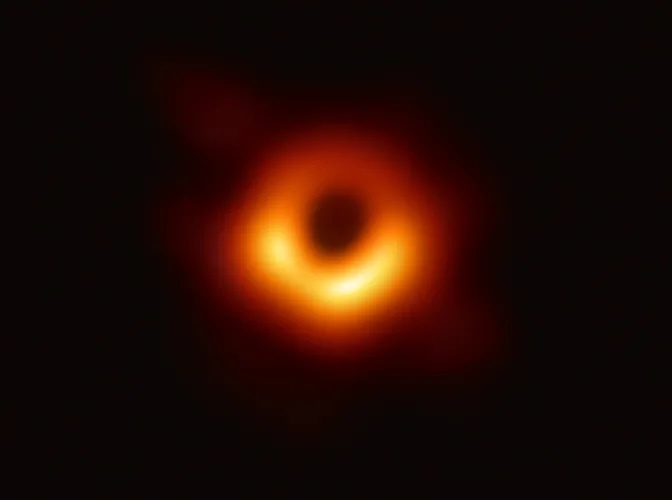Citizens around the world are asked to help scientists identify which sources are interesting and should be followed-up quickly – potential kilonovas - and which sources are false sources. The first, and so far only, kilonova observation was on August 18, 2017: a brief flash of light caused by the merger of two neutron stars. This merger resulted in the formation of a stellar mass black hole. This was a unique event; in addition to a flash of light, gravitational waves were also detected during the milliseconds leading up to the merger. This was the first time astronomers were able to detect both gravitational waves and electromagnetic radiation from the same event.
BlackGEM
When a kilonova occurs, the emitted light fades rapidly; it can only be detected for a few days. Astronomers must act quickly, pointing telescopes to the patch of the sky where the gravitational wave signal originates from. However, gravitational wave detectors, such as LIGO and Virgo, can only determine the location to a degree of accuracy that typically spans hundreds of square degrees on the sky (for reference, the full Moon covers about 0.2 square degrees), an area much larger than the field-of-view of the largest telescopes.
To determine the location more precisely, astronomers have built custom-made telescopes to quickly pinpoint the faint optical signal associated with the merger event. A recent addition to these telescopes is the sensitive BlackGEM-array of telescopes in Northern Chile. As soon as a gravitational wave signal is detected, BlackGEM will quickly scan the large region of the sky identified by the gravitational wave detectors. Comparison of these new observations with previous observations provides a large number of candidate sources. One of these could be associated with the gravitational wave event, a kilonova caused by the merger of two neutron stars and the birth of a new black hole.
False sources
“However, as a large area of the sky has to be searched, false, non-astronomical, signals can occasionally slip through our AI-trained filters”, explains Steven Bloemen (Radboud University, the Netherlands), project manager of the BlackGEM telescopes.
A common cause of false signals is light reflecting off communication satellites. “In addition, BlackGEM also detects signals of an astronomical origin, but which are unrelated to the kilonova signal we are looking for, such as near-Earth asteroids”, adds Peter Jonker (Radboud University, the Netherlands), PI of the citizen science app and co-PI of the Dutch Black Hole Consortium.
Citizens around the world are asked to help astronomers identify which sources are fake, and which sources are potential candidates for follow-up observations. “Even among these astronomical signals that are not due to the kilonova, there are events related to black holes”, says Paul Groot (UTC, Radboud University and PI of BlackGEM).
AI training
Due to the high number of candidate sources, astronomers use artificial intelligence techniques to decide which sources are interesting and which can be ignored. Bloemen: “People are still much better at identifying patterns than our algorithms. By using the app, citizens across the world can help train our AI-algorithms to distinguish between real and false sources and pinpoint the most interesting candidate sources more quickly.”
Citizens who have shown to be apt in spotting real sources can now trigger follow-up observations with the Las Cumbres Observatory (LCO) network of robotic telescopes. Jonker: “The LCO director has kindly agreed to allow citizens to trigger their 0.4m telescopes to conduct follow-up observations directly from the app when the user deems this necessary. This will provide information astronomers can use to determine if one of the real events is a kilonova.” Edward Gomez, LCO education director adds: "We are delighted to see LCO being used for this citizen science project, and in different languages, making astronomy more accessible to a wider audience."
Daniëlle Pieterse, PhD student at Radboud University and involved in BlackGEM and the development of the BlackHoleFinder app: “Potential kilonova signals can come at any time, day or night, and they evolve rapidly so time is of the essence. That’s why the BlackGEM data is available in the app around the world only 15 minutes after the telescope has taken the data. The global reach of the app is also crucial – with citizen scientists across the whole world, there will always be someone awake to quickly check the new data.”
During each observing night in Chile, the BlackGEM array will discover new transient sources. The app users can also see the telescope live in the app. No data can be taken during daylight hours in Chile, so then no new data will be available. The LIGO/Virgo/KAGRA consortium of gravitational wave detectors will be actively “listening” for new gravitational wave signals until June 2025.
The BlackHoleFinder-app, developed by the Dutch company DDQ Pocket Science, is available in the Apple App Store for iPhones and iPads, and in the Google Play Storefor Android. The app works in English, Dutch, Spanish, German, Chinese, Bengali, Polish, and Italian. There is also a desktop version available at: https://www.blackholefinder.org
Quelle: Radboud Universiteit

